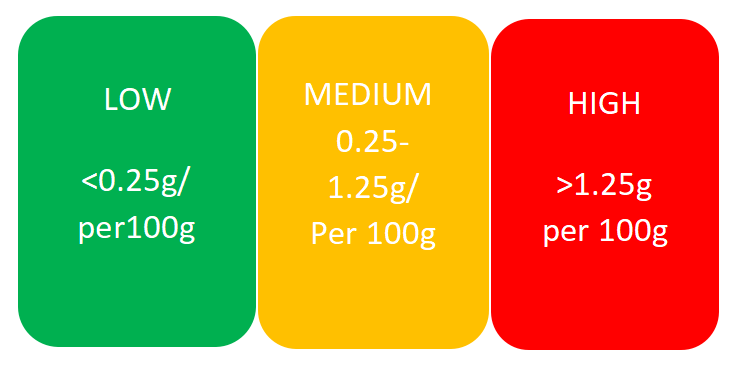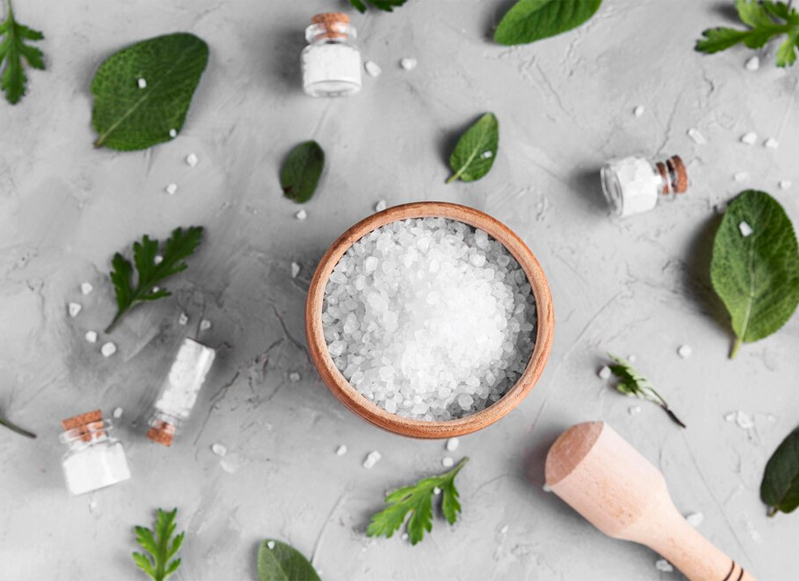What is Salt?
Salt is also known as Sodium Chloride and is the highest source of the mineral “sodium” in our diet. Sodium is an essential mineral and can also be taken in our food in the form of MSG (Monosodium glutamate), Sodium Bicarbonate (baking soda) and Sodium nitrate (preservative)
Why is Salt important for our health?
The cells in our body require adequate amounts of salt to function properly. Some of these functions include transporting water around the body (plasma volume and acid-base balance maintenance) and transmitting messages/nerve impulses between the brain and the rest of the body.
What is the daily recommendation for Salt?
The World Health Organization recommends that the healthy adult limit their daily salt intake to less than 5g of salt (Sodium Chloride) which is on average a teaspoon of salt. This is approx. 2g of sodium.
How Much is too much?
Generally, most of us have a mix of food ranging from home-cooked food to takeaway, ready-meals and eating from out. The latter options being more common, globally and locally we tend to have higher intakes of salt in our food and it has been found that on average and adult would consume around 11-12g salt per day which is double the daily requirement. Chronically high levels of salt can contribute to a variety of medical related problems with hypertension being the most common which in turn leads to cardiovascular disease. High levels of salt can also contribute to kidney stones, osteoporosis, stomach cancer, water retention and indirectly for obesity.
However, there can be exceptions in the tropics especially during hot weather and when engaging in sport for a long period of time we tend to loose salt (along with other electrolytes). In this case, you can easily replace some salt with your food.
What happens if you have less salt in your body?
This can lead to a condition called hyponatremia. Usually seen commonly among the elderly, with poor/declining oral intake over a number of weeks or on medication that flushes out salt and this is not compensated with oral intake to meet the daily requirements.
Acute conditions of hyponatremia can be episodes of diarrhoea and vomiting.
A dietitian can help you understand /manage such concerns with the help of a doctor and other healthcare professionals.
How can you reduce your salt intake?
- Use less salt OR no salt when cooking
- Limit the intake of high salty food and/or processed food
- High Salt food include dry fish, dried sprats, seasoning powder, pickles, King coconut water, salted snacks/nuts, processed meats (ham, bacon), certain types of cheese
- Be mindful of salt intake when eating from out (restaurant and takeaway food)
- Sauces, margarines are hidden sources of salt
- Check the salt content of packaged food.
- The traffic light labelling can be found on food and beverages. Check the salt content per 100g of any packaged food item. Green indicates low levels of salt (<0.25g), Amber/Yellow indicates Moderate/medium levels of salt (0.25-1.25g) and Red indicates high levels of salt (>1.25g)

In general, the consumption of salt in our daily diet is HIGH and increases the risk of several non-communicable diseases. So overall, we should aim to reduce our salt intake. However, understanding that there can be instances (especially among the elderly), where our body can have less salt is also important.
Email OR DM if you have any questions about all things salt!
Dietitians are trained healthcare professionals to understand the needs of nutrition in individuals with medical conditions and work closely with medical practitioners.
